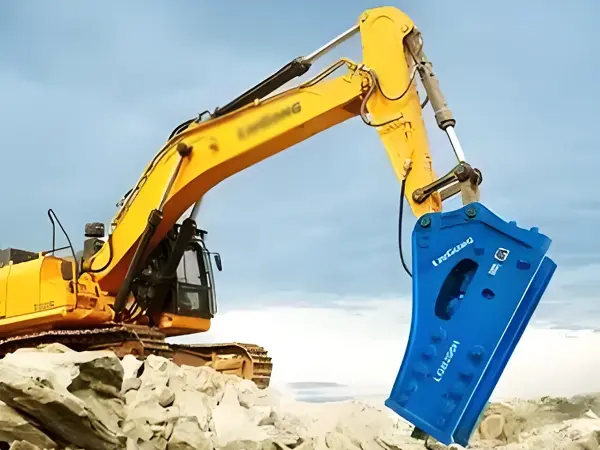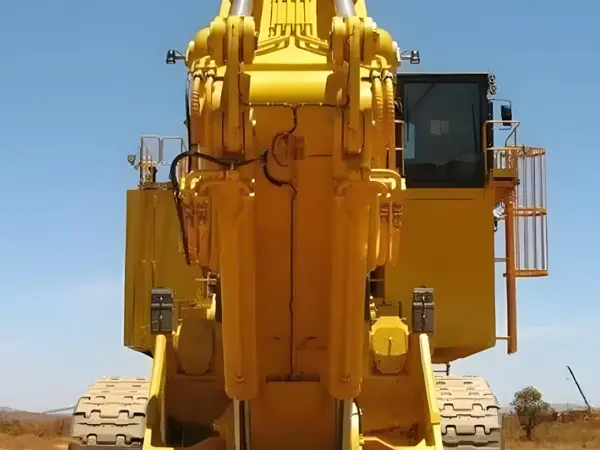Understanding the Role of Bucket Cylinder in Excavators: A Comprehensive Guide
Release time:
2025-07-10
When discussing excavators, one essential component that plays a significant role in their operational efficiency is the bucket cylinder. The bucket cylinder, part of the hydraulic system, is responsible for controlling the movement of the excavator's bucket, allowing for effective digging, lifting, and dumping of materials. Understanding how bucket cylinders work is critical for anyone involved i
When discussing excavators, one essential component that plays a significant role in their operational efficiency is the bucket cylinder. The bucket cylinder, part of the hydraulic system, is responsible for controlling the movement of the excavator's bucket, allowing for effective digging, lifting, and dumping of materials. Understanding how bucket cylinders work is critical for anyone involved in the manufacturing or operation of excavating machinery.
At its core, the bucket cylinder utilizes hydraulic pressure to generate force. When the operator controls the excavator's levers, hydraulic fluid is directed into the bucket cylinder, causing it to extend or retract. This action quickly translates to the bucket's movement, making it possible to perform various tasks such as scooping, grading, and backfilling. The efficiency of this process depends on the quality of the hydraulic fluid, the design of the cylinder, and the overall health of the hydraulic system.
The bucket cylinder comprises several key components, including the cylinder barrel, piston, seals, and rod. Each of these parts must be well-maintained to ensure optimal performance. For instance, the seals prevent hydraulic fluid from leaking, which is crucial for maintaining pressure. Regular inspections are recommended to check for any signs of wear and tear. If leaks are detected, they should be addressed immediately to avoid compromising the excavator's performance.
In addition to regular maintenance, understanding the specifications of the bucket cylinder is vital. Factors such as the cylinder's bore size, stroke length, and pressure rating can significantly impact its performance and compatibility with different excavator models. Manufacturers typically provide detailed specifications that should be consulted when selecting or replacing a bucket cylinder to ensure it meets the operational requirements of the machine.
Moreover, the application of bucket cylinders can vary widely. In construction, they may be used for digging foundations, while in landscaping, they can assist in shaping terrain. The versatility of bucket cylinders makes them indispensable in the field of excavating machinery.
In conclusion, the bucket cylinder is a critical element in excavators, enabling them to perform complex tasks efficiently. Regular maintenance, understanding components, and knowing specific requirements can enhance the performance and longevity of these vital hydraulic systems. By prioritizing these aspects, operators and manufacturers can ensure that their excavators operate at peak efficiency, ultimately contributing to the success of their projects.
At its core, the bucket cylinder utilizes hydraulic pressure to generate force. When the operator controls the excavator's levers, hydraulic fluid is directed into the bucket cylinder, causing it to extend or retract. This action quickly translates to the bucket's movement, making it possible to perform various tasks such as scooping, grading, and backfilling. The efficiency of this process depends on the quality of the hydraulic fluid, the design of the cylinder, and the overall health of the hydraulic system.
The bucket cylinder comprises several key components, including the cylinder barrel, piston, seals, and rod. Each of these parts must be well-maintained to ensure optimal performance. For instance, the seals prevent hydraulic fluid from leaking, which is crucial for maintaining pressure. Regular inspections are recommended to check for any signs of wear and tear. If leaks are detected, they should be addressed immediately to avoid compromising the excavator's performance.
In addition to regular maintenance, understanding the specifications of the bucket cylinder is vital. Factors such as the cylinder's bore size, stroke length, and pressure rating can significantly impact its performance and compatibility with different excavator models. Manufacturers typically provide detailed specifications that should be consulted when selecting or replacing a bucket cylinder to ensure it meets the operational requirements of the machine.
Moreover, the application of bucket cylinders can vary widely. In construction, they may be used for digging foundations, while in landscaping, they can assist in shaping terrain. The versatility of bucket cylinders makes them indispensable in the field of excavating machinery.
In conclusion, the bucket cylinder is a critical element in excavators, enabling them to perform complex tasks efficiently. Regular maintenance, understanding components, and knowing specific requirements can enhance the performance and longevity of these vital hydraulic systems. By prioritizing these aspects, operators and manufacturers can ensure that their excavators operate at peak efficiency, ultimately contributing to the success of their projects.





